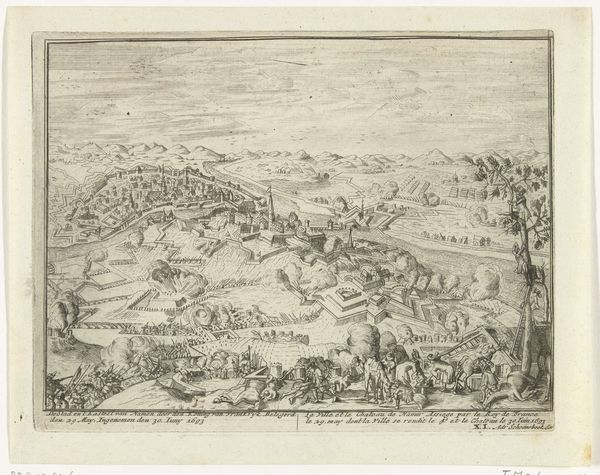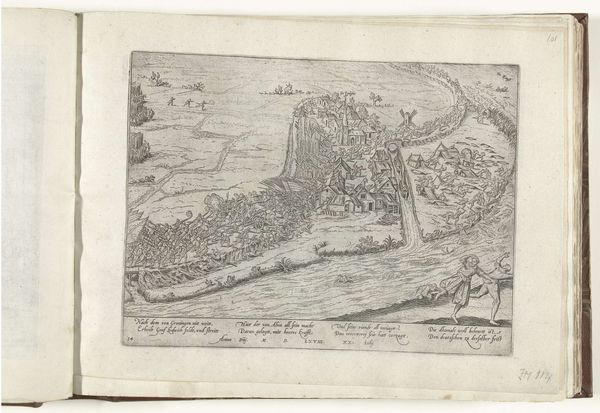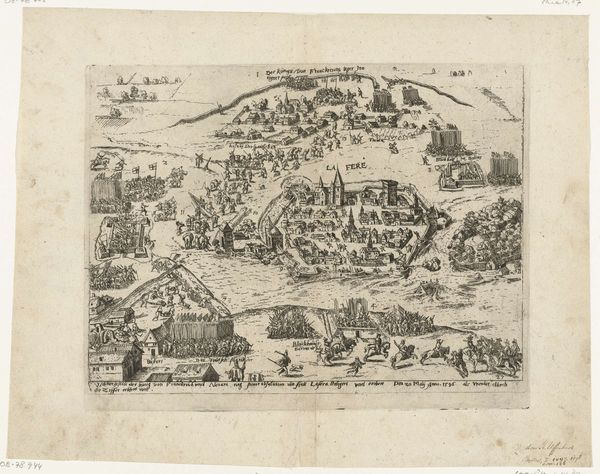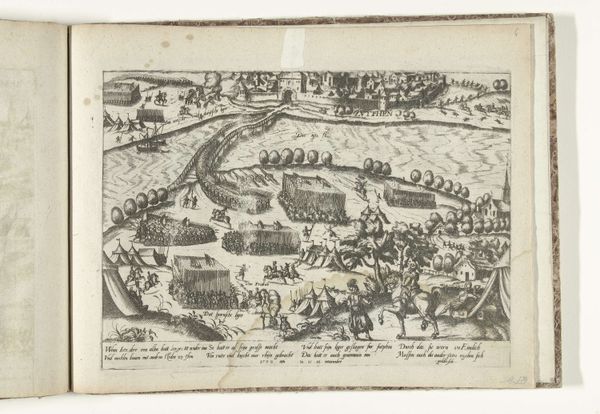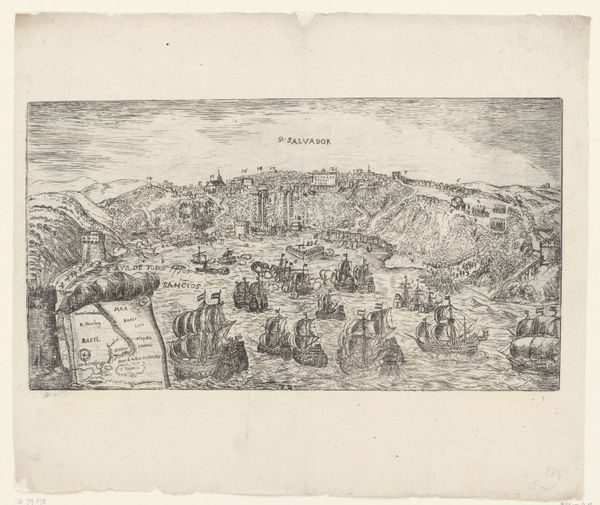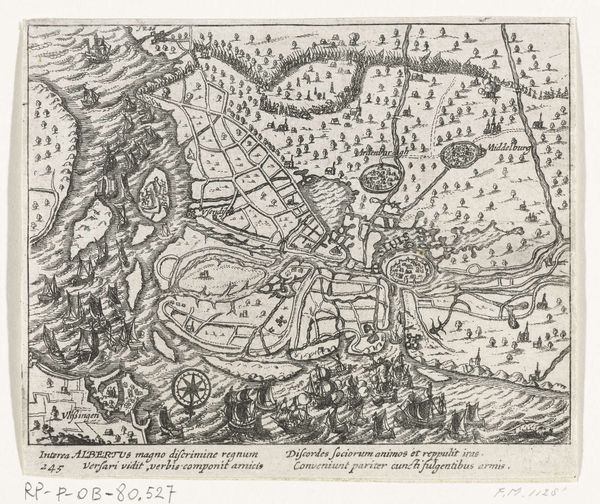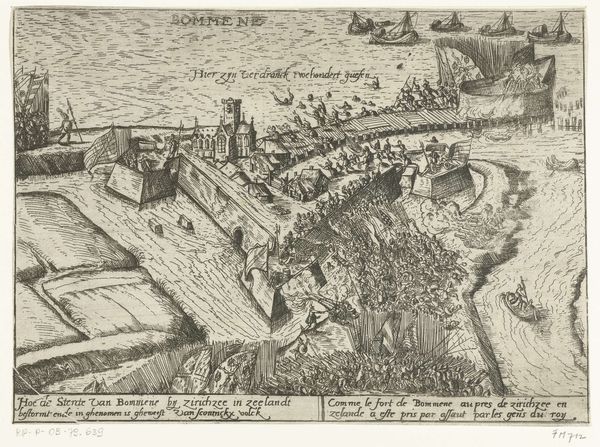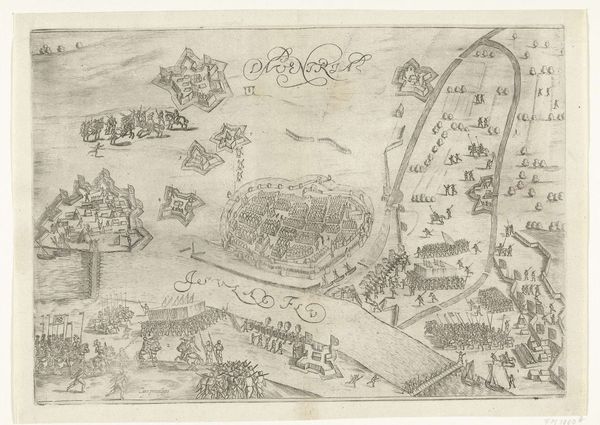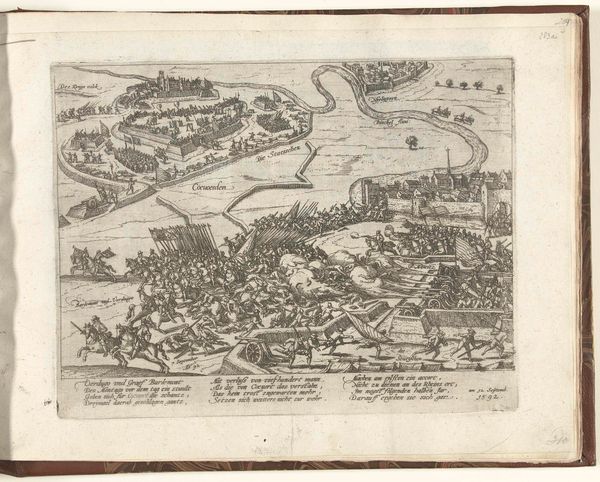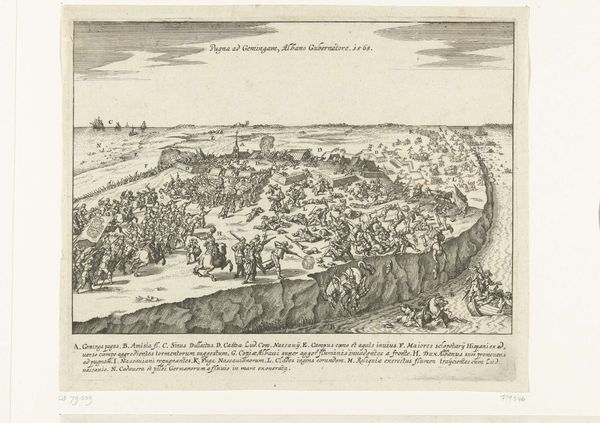
drawing, print, ink, engraving
#
drawing
#
baroque
#
pen drawing
# print
#
war
#
landscape
#
ink
#
history-painting
#
engraving
Dimensions: height 186 mm, width 302 mm
Copyright: Rijks Museum: Open Domain
Curator: Before us is an intriguing piece entitled "Slag bij Jemmingen, 1568," or "Battle of Jemmingen, 1568" rendered sometime between 1632 and 1699 by an anonymous artist. The materials consist of ink on drawing, likely a pen drawing that served as an engraving for print. Editor: My first impression is of organized chaos. The detailed ink strokes create a sense of violent dynamism, and there’s something quite chilling about seeing this aerial view of carnage neatly contained within the frame. Curator: I think that's very insightful. Consider the labor involved here. Each stroke of the pen, each etched line, represents hours, if not days, of painstaking work to create a mass produced image. What commentary can be derived when observing war through this lens? Editor: Absolutely. Beyond the technical skill, what’s striking is how the battle is depicted. We need to consider this within the Eighty Years’ War, part of the Dutch revolt against Spanish rule. This image serves not merely as a representation of warfare but an interpretation of cultural struggle against an empire. Curator: Yes, and thinking of that Dutch context is key to understanding the value this print may have had. How does the process of dissemination of images contribute to forming and shaping the views of the working populace, informing collective memory? Editor: Exactly! It becomes a form of early propaganda, doesn’t it? Framing the conflict to embolden resistance, influencing views on political autonomy and Dutch national identity during that turbulent period. It pushes one to consider issues of marginalization. Curator: These works challenge us to investigate how artistic production participates directly with the world. It invites us to assess what such war scenes tell us about conflict, even today. Editor: Agreed. Engaging with this piece beyond just aesthetic appreciation helps unpack power dynamics, informing, as you say, how these narratives shaped – and still shape – our understanding of conflict. It offers a somber, yet crucial dialogue across the centuries.
Comments
No comments
Be the first to comment and join the conversation on the ultimate creative platform.
